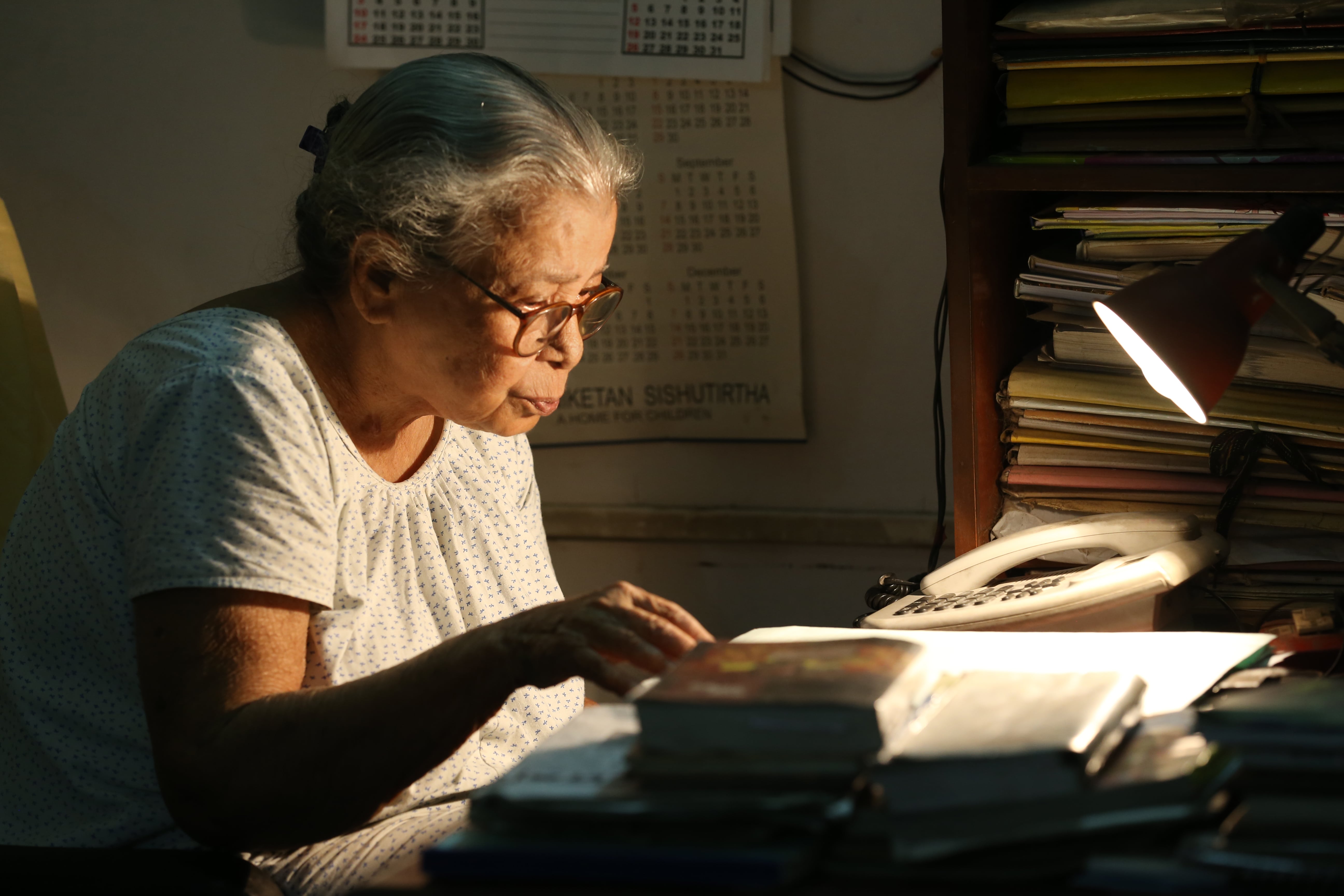
Journeying with Mahasweta Devi – a film that captured the writer’s essence
July 28 was the fifth death anniversary of Mahasweta Devi’s death. Re-visiting Joshy Joseph’s 2009 road documentary about the writer is a worthy way to remember her

July 28 was the fifth death anniversary of Mahasweta Devi (1926-2016). The author, who transcended the elite’s definition of ‘writer’, left behind around 150 novels, 350 short stories and 1,500 essays.
Re-visiting filmmaker Joshy Joseph’s 2009 road documentary, Journeying with Mahasweta Devi, and chatting with the filmmaker, who had known the writer from 2005 till her death, is a worthy way to remember Mahasweta Devi this year.
The film gives us a glimpse into the writer’s life, like snapshots trying to capture different facets of the protagonist who, apart from a writer, was also an activist who represented people-centric politics.
A pensive writer focused on her writing, a nature-lover wiping raindrops from the bars of a train window and brushing them on her hair and cheeks, a compassionate human embracing a heartbroken woman during a visit to Nandigram… these are some images that linger long after one has watched the film.
“I feel much more at home with smaller rivers,” she says at one point.
“I use no tricks. I’m normal,” she intervenes when literary critic G.N. Devy tries to explain her “success formula”.
Also read: ‘Gypsy’ and GN Devy: Of nomadic tribes and their untold stories
The film opens with a shot of Mahasweta Devi’s family photograph with the camera moving closer (with poignant music in the background) to show a close-up of the young writer, with her husband Bijon Bhattacharjee and her son.
The viewer is informed that Bijon had acted in her uncle Ritwik Ghatak’s film, and was one of the founding members of the Indian People’s Theatre Association and also a member of the Communist Party of India.
After the birth of their son Nabarun in 1948, who became a poet, actor and writer, Mahasweta Devi began to turn her energies to writing. It was a difficult period for the family when communists and their sympathisers were being harassed.
“To augment her income, she wrote for Sachitra Bharat, a Bengali weekly, under the pen-name Sumitra Devi,” a caption informs the viewer.
In 1956, however, came her first major work, the historical biography Jhansir Rani.
“Do you think there are two Mahaswetas?” Devy asks referring to her quest for a peaceful, just life amid the conflicts that confront the society.
“There is only one Mahasweta who knew she had chosen her life long ago. And I believe in protests but did not [sic] do that deliberately,” she replies.
When Devy asks her if her anxiety and anger can be compared to that of Thomas Mann and Kafka, she just says, “These are very big names.”
But she hastens to add: “We can’t forget Dostoevsky…”
The film reminds the viewers that Mahasweta Devi discarded the literary tradition that was in vogue then and chose a different path from her predecessors, including Rabindranath Tagore, Sarat Chandra Chattopadhyay, Tarasankar Bandopadhyay, Satinath Bhaduri, Manik Bandopadhyay and Adwaita Mallabarman.
The viewers get to see the dance sequence from Ghatak’s 1974 Bengali movie Jukti Takko Aar Gappo (Logic, Argument and Story) in the initial phase of the film. The best story, the narrator says, he ever heard was from this movie in which three ghosts symbolising logic, argument and story dance. In the end, the first two disappear and finally only the story remains.
Being familiar with Joshy’s films by now, one feels that trains and railroads, journeys, and delicate camera movements with soulful music are common features of his works. Devy takes great pains to explain Mahasweta Devi to the viewers. It would have been better if all that was left to the protagonist herself.
Apart from Journeying with Mahasweta Devi, the writer-activist was also part of Joshy’s Mahasweta Devi — Close Up besides appearing in Walking Over Water (2021).
The filming of Journeying with Mahasweta Devi started around 2005 and was completed in several phases, Joshy told The Federal.
“After watching my film, One Day from a Hangman’s Life, Didi expressed her wish to meet me. When I went to her house she asked, Joshy, where were you all these days? – as if we had known each other before,” the filmmaker said.
A week after the meeting she asked him to accompany her to Purulia where she was running a tribal school and academy.
In 2007 Joshy accompanied the writer to Nandigram. In Journeying with Mahasweta Devi, there are scenes of the writer visiting Nandigram soon after the state-sponsored violence by the Buddhadeb Bhattacharya government. The sequences spur us to reflect on the plight of the Left in West Bengal today.
Mahasweta Devi visited Kerala four times. In 2008 she came to express solidarity with the people’s movement in Moolampilly, who were demanding compensation and rehabilitation for the families evicted for laying the railway line for the Vallarpadam International Container Terminal Project.
“One day Didi asked me why I looked tense. I told her Nandigram is happening in my state. She immediately said, we should go there,” Joshy said.
“Didi was left-leaning though she opposed the official Stalinist faction of the party. Today, we can say Mamata Banerjee is the left in West Bengal. Her politics has transitioned from the Centre towards the left. As her victory in the last assembly election proves, left supporters have en masse shifted their loyalty to Mamata. If her previous tenures were punctuated with scandals, she has evolved lately.”
The aspects of a good leader Mahasweta Devi identified in Mamata will become apparent during her third term, Joshy says.

